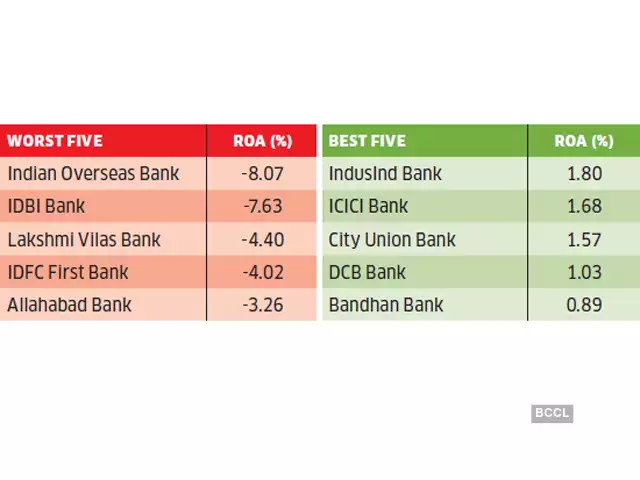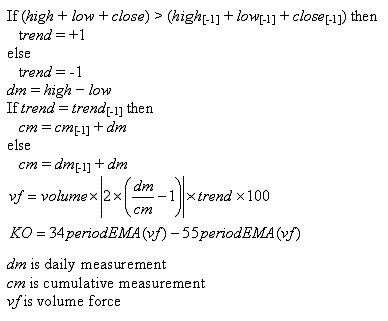Contents:


Systematic risk is often calculated with beta, which measures the volatility of a stock or portfolio relative to the entire market. Meanwhile, company risk is a bit more difficult to measure or calculate. To reduce or eliminate thisrisk, investors diversify their portfolios by buying shares of different sectors, companies, and geographical regions. The greater the diversification, the lower the residual risk in the overall position. Unsystematic risk is measured and managed through the implementation of various risk management tools, including the derivatives market.
What Is Specific Risk? – Investopedia
What Is Specific Risk?.
Posted: Sat, 25 Mar 2017 20:10:05 GMT [source]
Total risk comprises two types of risks that include risk- systematic risk and unsystematic risk. Systematic risk is a result of various external or macro-economic factors like political, social, and economic whereas unsystematic risk is a result of factors that are internal or microeconomic in nature. Systematic risks are uncontrollable while unsystematic risks can be easily controlled and taken care of with proper implementation of required strategies. Systematic risk cannot be minimized or eliminated whereas unsystematic risk can be minimized or eliminated.
Owners of companies may contribute all of the capital needed to fund the business, they can issue securities like stocks and bonds, or they can borrow money from a bank or other lender. The beta of the broader equities market, at all times, is equal to one, so a coefficient of 1 implies the security’s systematic risk is equivalent to the systemic risk of the stock market on average. For individual securities or a portfolio, the beta coefficient is estimated by regressing the historical returns of a security to the returns on a stock market index, typically the S&P 500.
Mutual fund Investments
These changes can increase operational costs or introduce legal hurdles. More drastic legal or regulation changes can even stop a business from operating altogether, such as with the potential ban on TikTok in the US by the US government. Other types of legal risk can include errors in agreements or violations of laws. Once diversified, investors are still subject to market-wide systematic risk. Now, assuming you know how to estimate total risk and market risk, we can proceed further.

After the next year rolls around, the company might find that consumers actually prefer bigger phones and watches. Much of the existing inventory for the aforementioned technology company either goes unsold or sells at a major loss. Full BioMichael Boyle is an experienced financial professional with more than 10 years working with financial planning, derivatives, equities, fixed income, project management, and analytics. The required repayment of principal and interest creates an obligation for the firm that will reduce its net income.
Systematic Risk vs. Unsystematic Risk: What is the Difference?
Systematic risk can be reduced with asset allocation, while unsystematic risk can be limited with diversification. Unsystematic risk is any type of risk that is specific to investing in a particular company or industry. Because unsystematic risk is dependent on factors that affect the issuer of the particular security you invest in, it is also called specific risk. The total risk of an investment portfolio consists of unsystematic risks and systematic risks—those that affect all companies in a given market. Nevertheless, systematic risk depends on various macroeconomic factors such as interest rate hike and inflation which can not be avoided.
Beta, the risk component in the CAPM, establishes the relationship between the market risk and the expected return. Under the CAPM, the expected return on a security is a function of the systematic risk, rather than the unsystematic risk, as the latter can be diversified. Systematic risk impacts the entire financial market and economy as a whole, whereas unsystematic risk is specific to a company .
On January 1, 2015, Margaret invest $100,000 in a diversified portfolio that invests 60% in U.S. stocks, 25% in foreign stocks of developed economies, and 15% in emerging markets. On December 31, 2015, the value of the portfolio is $116,260, having incurred an annual growth of 16.26%. Business risk is the uncertainty that arises due to the nature of the business activity that the company you are investing in is engaged in.
Unsystematic Business Risk
Now, on 31st December 2019, you found that the total value of the portfolio now is $114,531 since there was an annual growth of 14.5% on total investment. For instance, a firm may generate high profits in case of which the stock prices go up. On the other hand, some other firm may generate low profits which make its stock prices go down.
Systematic risk refers to the risk inherent to the entire market or market segment. Systematic risk, also known as undiversifiable risk, volatility risk, or market risk, affects the overall market, not just a particular stock or industry. Generally, risk-averse investors will prefer a portfolio of beta less than one so that they have to incur lower losses in case of a sharp market decline.
Such programs help to assess the potential risk factors, communicate the same and then finalise the steps to mitigate them. Systematic risk is also known as the non-diversifiable risk or the market risk which rises because of macroeconomic factors in the market. For instance, these factors can be broadly categorized into social, political and economic. Systematic risk can be an interest risk, inflation risk or any market risk to the firm.
For instance, a decrease in foreign currency value can trigger sudden losses in the company. For example, a significant percentage of investors will follow the same mistakes for an extensive time. However, in most instances, error in judgment and bad entrepreneurship leads to massive losses for a company. INVESTMENT BANKING RESOURCESLearn the foundation of Investment banking, financial modeling, valuations and more. Operational risk summarizes the chances a company faces in the course of conducting its daily business activities, procedures, and systems.
What It Means for Individual Investors
example of unsystematic risk risk is itself a type of risk which is controllable by an organisation. However, in case the organisation is not able to take care of any part such as management, liquidity etc., unsystematic risk can interfere with the normal operations. There are several concepts revolving around unsystematic risk management. This article is your go-to guide that explains all that you need to know about unsystematic risk, in a very comprehensive manner.
Ultimately, regardless of how you decide to manage your investments, your appetite for risk will have a large impact. It’s important to understand this before and during your investment journey. Examples include events, such as legal procedural consequences, strikes, or natural disasters. This risk is also called a diversifiable risk, as it can be removed by proper diversification of a portfolio.
- It’s important to understand this before and during your investment journey.
- That’s because the individual risks of firms tend to cancel out as a result of portfolio diversification.
- Production lines are altered and capital is devoted toward smaller devices.
- As said, ‘unsystematic risk is uncertain;’ thus, it can significantly impact a company’s investment or the overall industry.
- Unsystematic risk is diversifiable, meaning that if you buy shares of different companies across various industries you can reduce this risk.
There isn’t a formula for calculating unsystematic risk; instead, it must be extrapolated by subtracting the systematic risk from the total risk. Unsystematic risk is the risk that is unique to a specific company or industry. It’s also known as nonsystematic risk, specific risk, diversifiable risk, or residual risk. In the context of an investment portfolio, unsystematic risk can be reduced through diversification—while systematic risk is the risk that’s inherent in the market.
What Is the Difference Between Systematic and Unsystematic Risk?
This type of risk can include the actions of a customer against the company. However, competing firms and suppliers can also put you into such troubles based on the business and the strategies you follow. In short, it’s like a liability for the company, and the company is paying interest for it. Apart from these, other debt-related factors also include in the financial risk. Financial RiskFinancial risk refers to the risk of losing funds and assets with the possibility of not being able to pay off the debt taken from creditors, banks and financial institutions. A firm may face this due to incompetent business decisions and practices, eventually leading to bankruptcy.
Ray Dalio on the Latest addition to his ‘Principles’ series, and How to … – Investopedia
Ray Dalio on the Latest addition to his ‘Principles’ series, and How to ….
Posted: Fri, 03 Feb 2023 08:00:00 GMT [source]
There can be such risks which a business can accept as they may not be detrimental to the business. On the other hand, some risks which can be serious enough need to be resolved at the earliest. For instance, if a crucial part of the business breaks down, it requires it to be fixed immediately.
The general sentiment was that the temporary underperformance would subside, and this optimism was aided by the rock-bottom yields exhibited in the bonds market. Throughout the lockdown period, government mandates placed measures in which businesses were forced to close shop and were unable to operate normally. Of course, the severity of the risk is not spread evenly across all sectors, as some are able to recover and return to normalcy more quickly.
- The policymakers face challenges in resolving the risks as they have to deal with the utmost attention because of its nature.
- Try it now It only takes a few minutes to setup and you can cancel any time.
- That’s why businesses set up some techniques and upgrade their management to avoid these small but impactful risks.
- Under the CAPM, the expected return on a security is a function of the systematic risk, rather than the unsystematic risk, as the latter can be diversified.
- Systematic risks are uncontrollable while unsystematic risks can be easily controlled and taken care of with proper implementation of required strategies.
Risk is a natural part of investing, and every investment carries some degree of risk. While small businesses were struggling and many went bankrupt even with governmental aid, the share prices of many public companies, despite reporting weak financial performance, were upheld. One example of an external risk that impacted the entire global financial system was the Covid-19 pandemic. All the risks which were identified and resolved should be regularly tracked and reviewed for any future inconveniences. A team of employees can be set up for the same, and the leaders or managers can implement the solutions required. After you have identified the risks which your business is more vulnerable to, you can find out how severe the impact may be and then rank each risk based on the severity.
Systematic risks have the potential to put an entire industry or an overall economy into total distress whereas unsystematic risks have the potential to put an organization into distress. Systematic risks cannot be controlled, minimized, or eliminated by an organization or industry as a whole. On the other hand, unsystematic risks can be easily controlled, minimized, regulated, or avoided by the organization.
